2025 Hyundai Inster review: $1 to go 100km as new EV pairs small car frugality with a big personality for a fresh alternative to the BYD Dolphin and MG4
Hyundai’s cheapest EV, the Inster, isn’t at cheap as some.
But it makes up for it with a big personality – and the most efficient EV running we’ve ever experienced.
The all-electric newcomer is bursting with look-at-me styling and backs it up with some fun driving dynamics.
Get the right EV electricity plan and you could cover 100km for less than $1.
READ MORE: With no rear airbags the new Hyundai Inster is unlikely to get a four-star ANCAP rating
READ MORE: Hyundai Inster priced: It’s the cheapest non-Chinese EV you can buy in Australia today, but still $10K more than a BYD Dolphin
READ MORE: EV switch! 2025 Hyundai Staria going electric as zero-emissions rival for Ford E-Transit, Volkswagen ID. Buzz, Mercedes EQV and Zeekr 009
Sure, it’s small (tiny, even) but the lack of sheetmetal adds to the Inster’s city-friendly appeal.
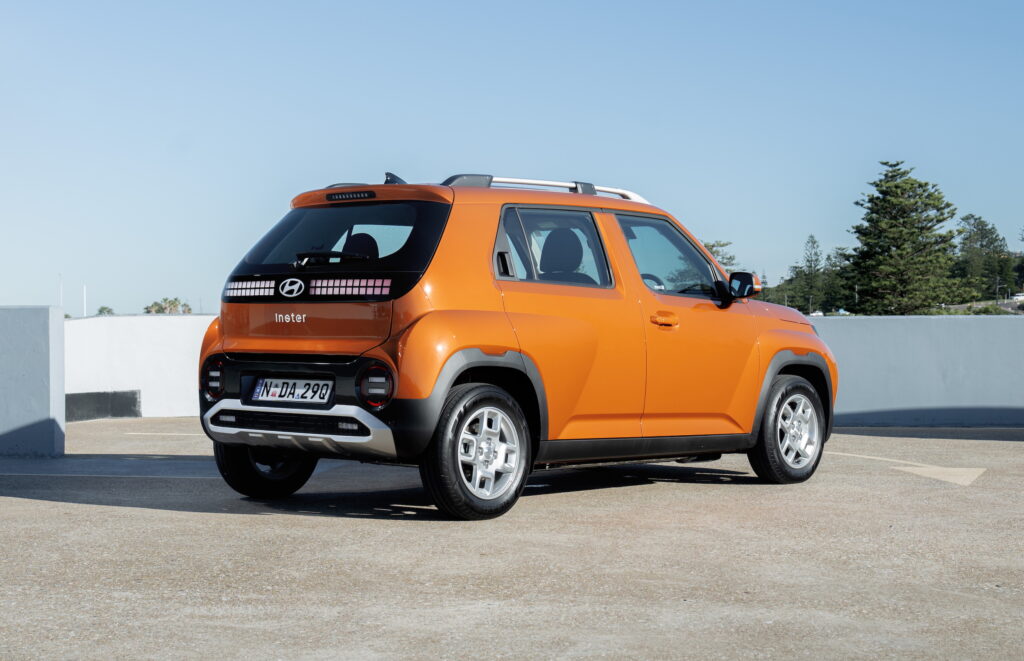
The big question is whether the Inster has enough pizazz to justify a price tag that stretches it into the domain of larger SUVs.
2025 Hyundai Inster price and equipment
The Hyundai Inster may be small and relatively affordable but it’s not as budget-priced as somem namely the MG4 (from $36,990, soon to be $37,990, and the BYD Dolphin, at $29,990, each before on-road costs).
The tiny SUV (it’s a fine line between those high riders and old school hatchbacks) is priced from $39,000 plus on-road costs.
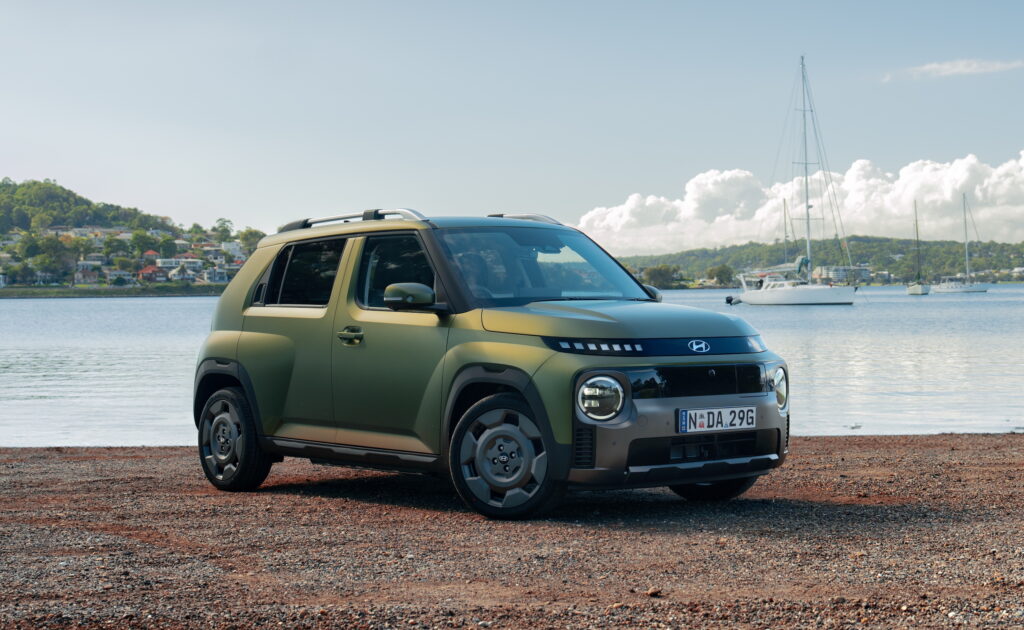
That’s for the cheapest of the three variants: Standard Range, Extended Range and Inster Cross.
That Standard Range gets a 42kWh battery for 327km of WLTP EV range.
Standard kit includes 15-inch alloy wheels, wireless phone charging, smart key entry, cloth trim made of recycled plastic bottles, satellite navigation and a 10.25-inch digital instrument cluster and 10.25-inch central display with Apple CarPlay and Android Auto. Plus there’s Bluelink remote connectivity with over-the-air software updates.
There’s also a vehicle-to-load (V2L) function supplying up to 3.6kW of electricity to a standard AC powerpoint in the rear of the centre console.
A single electric motor sends 71.1kW and 147Nm to the front wheels.
For more distance between charges you can choose the Extended Range ($42,500 plus on-roads) with a 49kWh battery, in turn stretching the WLTP range to 360km.
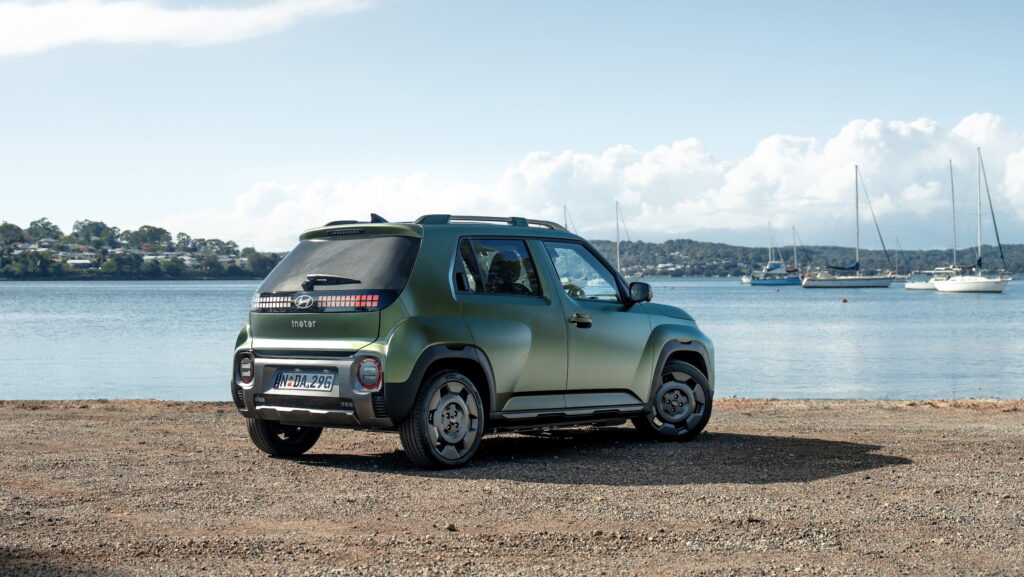
It gets 17-inch alloys and offers an optional two-tone interior in Khaki Brown and Newtro Beige (almost as funky as the exterior styling!).
At the top of the range is the Inster Cross ($45,000 plus on-roads), which keeps the bigger battery along with a more adventurous design courtesy of unique bumpers front and rear and roof rails. You can also choose between a panoramic sunroof or roof basket, the latter adding aerodynamic drag that reduces the claimed range to 293km.
The Cross also gets faux leather, ventilated and heated front seats, a heated steering wheel, ambient lighting, 360-degree camera and front parking sensors.
Plus the front passenger seat folds almost flat more easily allowing for long luggage to poke through.

Those up front get good airbag protection with front and side curtain airbags as well as a centre airbag between the front seats.
But there are no airbags in the rear.
Active safety gear includes autonomous emergency braking with junction assist, driver monitoring, speed sign recognition, lane keep assist, rear cross traffic alert, blind spot warning and exit warning.
The Inster is covered by a five-year unlimited kilometre warranty with a separate eight-year/160,000km warranty for the high-voltage battery.
Servicing is called for every two years or 30,000km.
2025 Hyundai Inster: What we think
It may not be the cheapest EV going but the Hyundai Inster could be the cheapest to run.
Electricity use is crazy low in this pint-sized SUV.
We regularly had it using less than 10kWh per 100km when zipping around town.
If you’re utilising an off-peak charging plan – where electricity can be 8c/kWh or less – then you’re looking at less than $1 per 100km.
Think about that; 10,000km of motoring in a year for less than $100.
Sure, you’ll use more on the open road, but not heaps more.
Besides, the Inster is not a road trippy sort of EV. It certainly does its best work around town.
A column-mounted gear shifter twists to select Drive or Reverse – and it’s then that the fun-and-funky personality comes into its own.
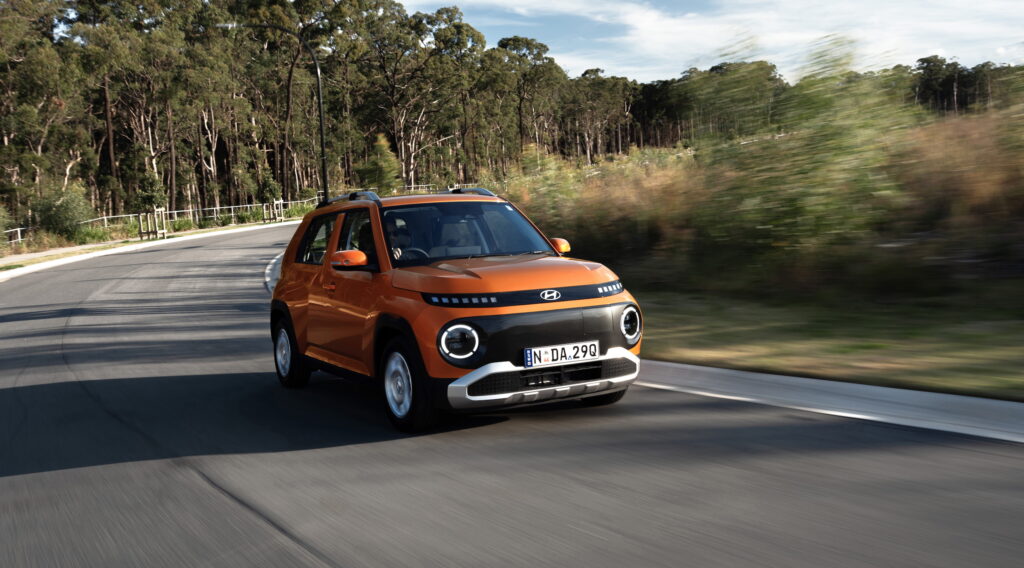
There’s only 71.1kW of power in that base Standard Range, but the easily accessible 147Nm in a lightweight body (a smidge over 1.3 tonnes) makes it surprisingly perky around the suburbs.
There’s a fraction more fizz from the peppier Extended Range and Cross models (with 84.5kW/147Nm), although there’s not an enormous difference between the two in everyday driving.
It’s also worth keeping in mind what the Inster is up against if you’re also considering petrol alternatives. Anyone shopping for a basic small car will likely get an equally basic engine that needs plenty of encouragement (I’m talking big revs) for respectable performance.
Paddle shifters adjust the level of regenerative braking and allow for a smart setting that intensifies the braking when behind other vehicles; that smart mode can be difficult to modulate because the computer is often second guessing what your brain wants to do.
Charging can be done at up to 10.5kW. Use a more common 7.4kW you can expect a full charge in about 6.5 hours for the Standard Range and seven hours for the bigger battery.
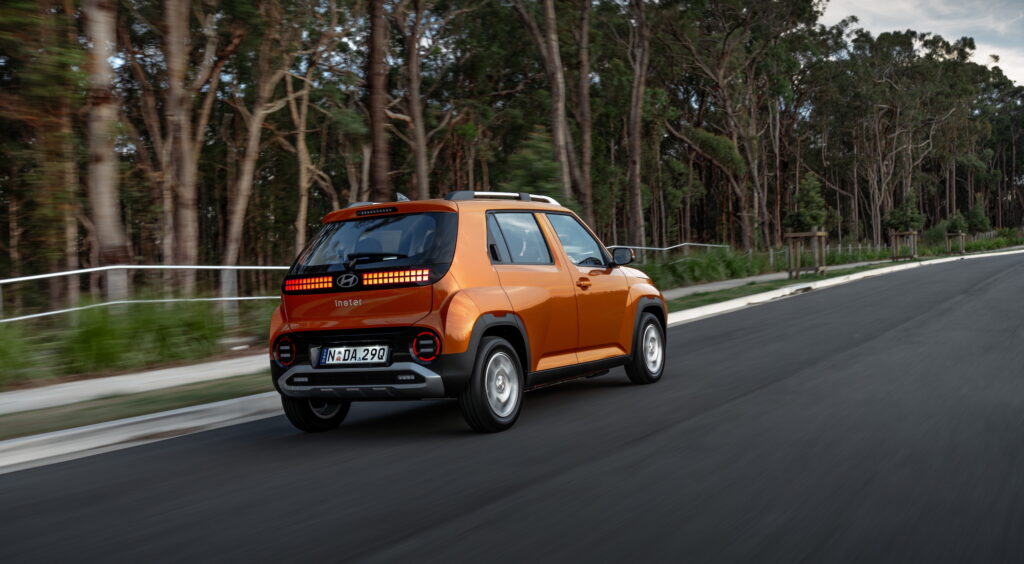
DC fast charging can be done at up to 120kW for a 10-80 per cent top-up in about half an hour.
The Inster’s driving dynamics tower way above its physical size.
It deals admirably with bumps, controlling things swiftly and delivering bigger car comfort.
Those relatively basic 15-inch tyres on the Standard Range help with smothering imperfections. A relatively long 2580mm wheelbase reduces pitching, too, adding to the bigger car flavour.
The lower profile 17-inch tyres of more expensive variants add some fidgeting over bumps, but it’s minor stuff; overall the car is still very well mannered.
Fluid steering is slick and responsive and the Inster has a fun factor that perfectly matches its design demeanour.
Now, onto looks… There’s no ignoring the design of the Inster. It’s different, it’s fresh and the computer-game-like pixelated tail lights add to the whole smile-inducing form factor.
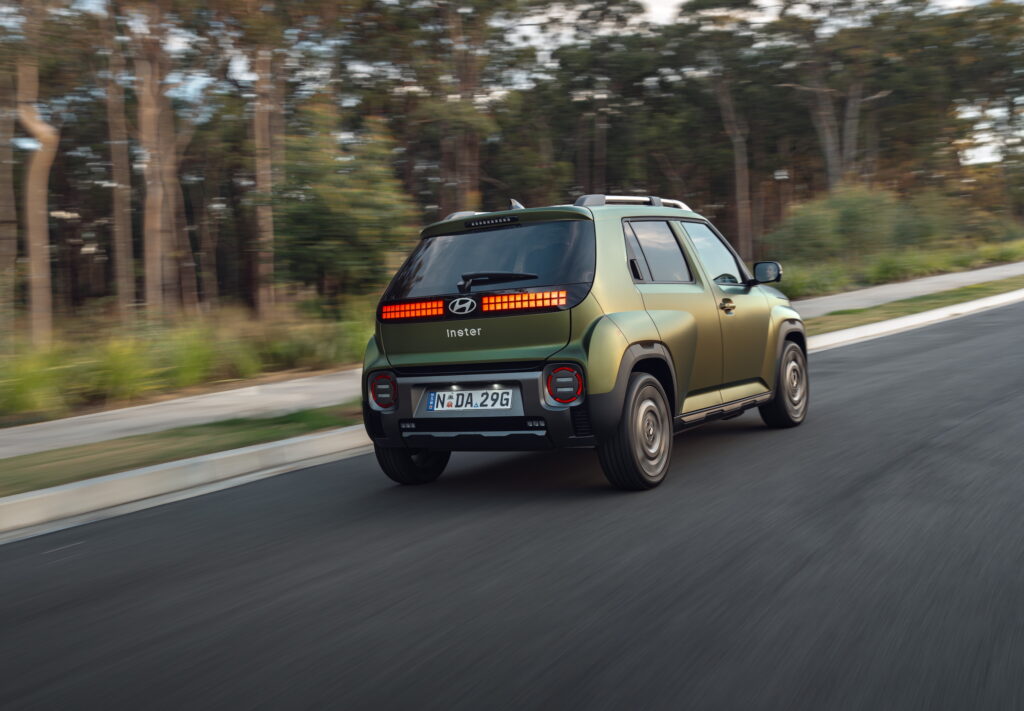
OK, so it’s not exactly mucho with is tall, skinny stance, but at least it’s different!
That skinny body makes itself felt inside.
There are only two back seats, reducing its appeal to some. And those in the back do without rear airbags (almost unheard of in 2025).
But let’s not kid ourselves, because this ain’t family transport.
Two big blokes up front will be close to rubbing shoulders. Loved up couples may appreciate the closeness.
No complaints about headroom, no matter where you’re sitting.
Those in the rear can also slide the seat base forward or back depending on how much boot space you want.
If you want fresh air you’ll be winding the windows down because there are no vents in the rear.
With the seats slid back luggage space is at a premium; think a couple of soft bags.
But you can 50/50 split-fold the back seats for more. A small luggage cover keeps things out of view.
Up front there’s a bench-like front seat with an arm rest between the occupants. It’s an interesting layout, albeit one that means there’s no covered binnacle.
A smattering of recycled materials – the flecked yellow on the Inster Cross is an interesting option – helps liven the already playful look.
The infotainment screen perched atop the dash is easy to see and easy to access.
Its familiar menu system also works well enough while physical buttons make it easy to access main menus.
2025 Hyundai Inster: The verdict
The Inster has a personality way bigger than its physical size.
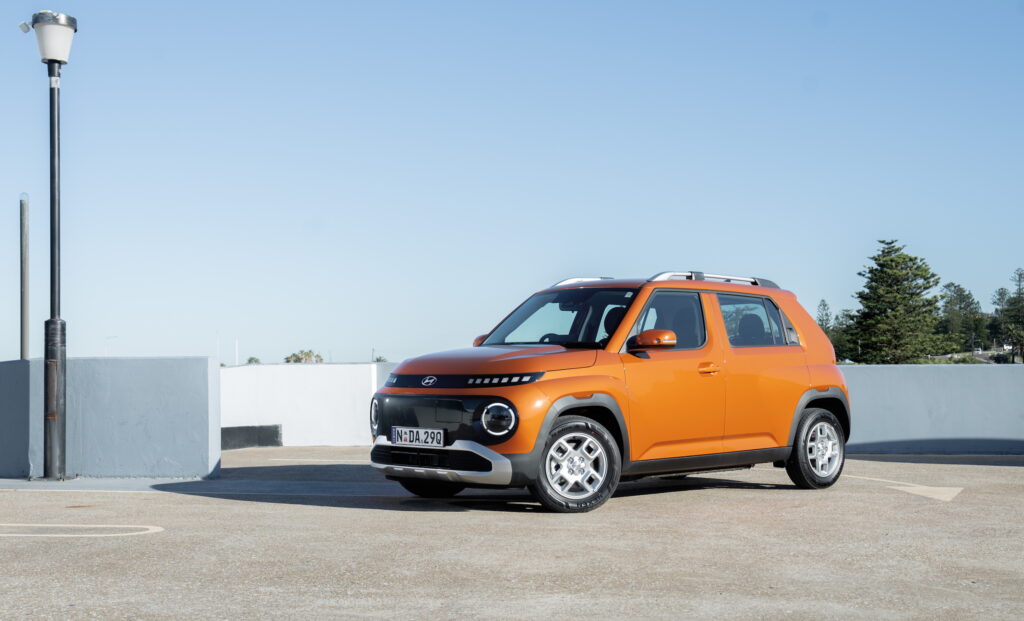
It’s fun to drive and deceptively accomplished while maintaining the diminutive dimensions that make it so easy to zip around town in.
Compared with other small electric alternatives – we’re thinking Chinese brands such as BYD, MG and GWM – the Inster is relatively pricey.
But for those who want more than mere transport it packs in plenty of driving substance.
Score: 4/5
2025 Hyundai Inster price and specifications
Price: From $39,000 plus on-road costs
Basics: EV, 4 seats, 5 doors, SUV (just!), FWD
Range: 327km
Battery capacity: 42kWh
Battery warranty: 8 years/160,000km
Energy consumption: 14.3kWh/100km (expect a lot less around town)
Motors: 1 front 71.1kW/147Nm
AC charging: 10.5kW, Type 2 plug
DC charging: 120kW, CCS combo plug
0-100km/h: NA

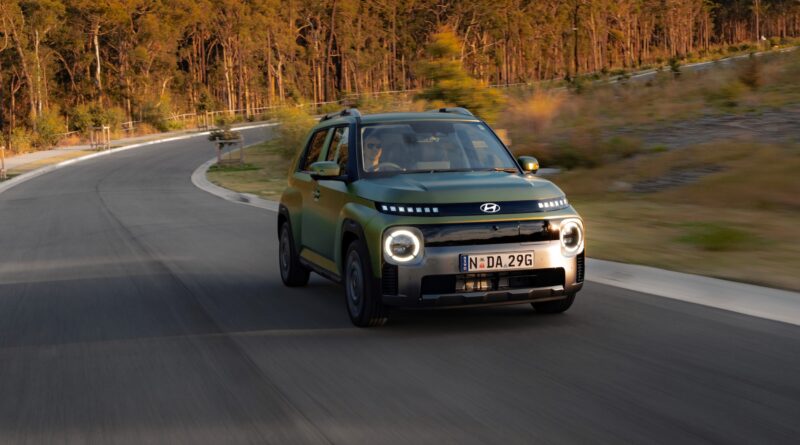

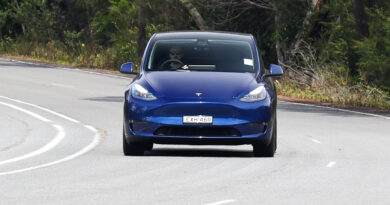

The price comparison against bigger cars may not be relevant for many buyers. People are happy to pay a premium for a compact size in other areas; why not in cars as well?
Switching from a 4.6 m long Citroen to a 3.6 m long Fiat 500e has liberated a metre of garage space for us . I no longer have to move the car out to use my workbench.
There is also the joy of grabbing that car parking space that everyone else deemed too small.